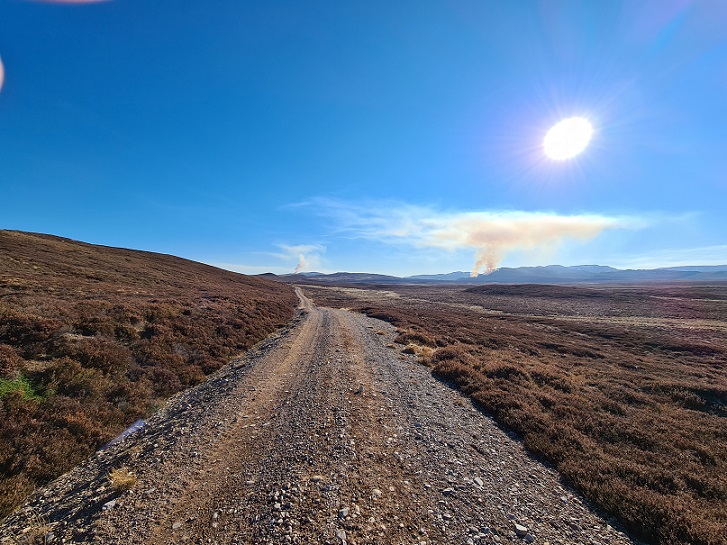
It’s the height of the muirburn season and the clear blue skies at the start of the month helped highlight the folly as the Cairngorms National Park was dotted with plumes of smoke.
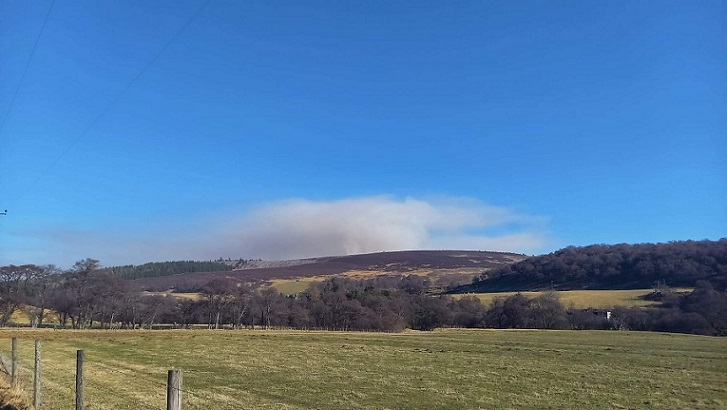
The pollution caused by muirburn doesn’t just release carbon into the atmosphere, it reduces air quality and harms the health of people living in or visiting rural areas.
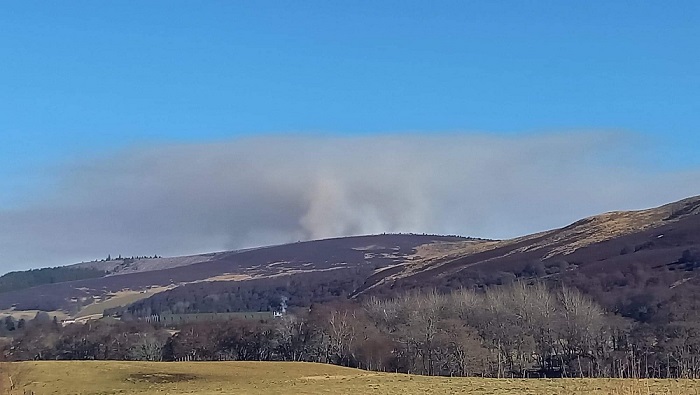
Glen Livet is owned by the Crown which claims (see here) it wishes “to manage the estate as an outstanding example of a sustainable highly integrated multiple-use upland estate, which provides a commercial return“. The Estate Management Statement also indicates that the Crown has leased out the sporting rights. It appears likely that, as at Dinnet (see here), the estate has granted the lease-holder the right to manage the land as they wish to produce large numbers of grouse. If so, the use of muirburn for this purpose will undermine any possibility of sustainable land-management and shows the Crown Estate is not acting in the public interest.
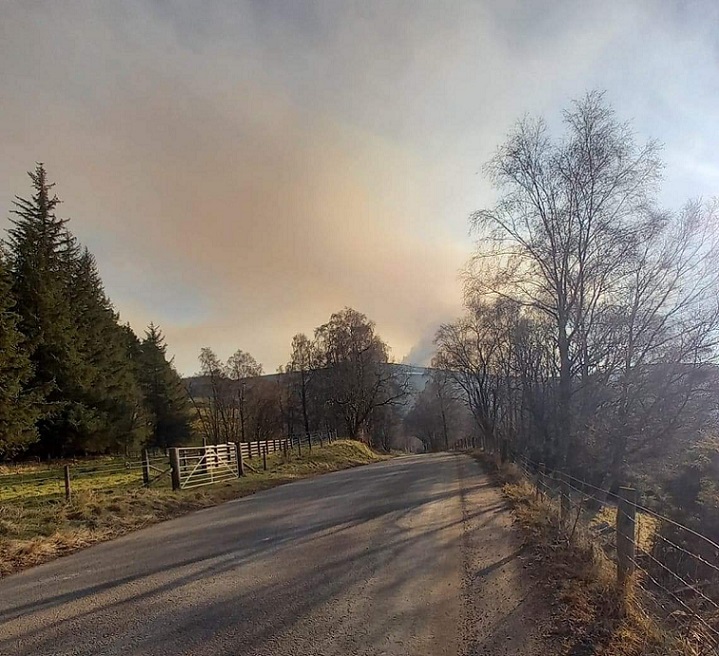
One of the pleasures of lockdown has been the significant reduction in air pollution and the clear blue skies unmarked by the vapour trails of aircraft. That, however, has helped show just how polluting muirburn is.
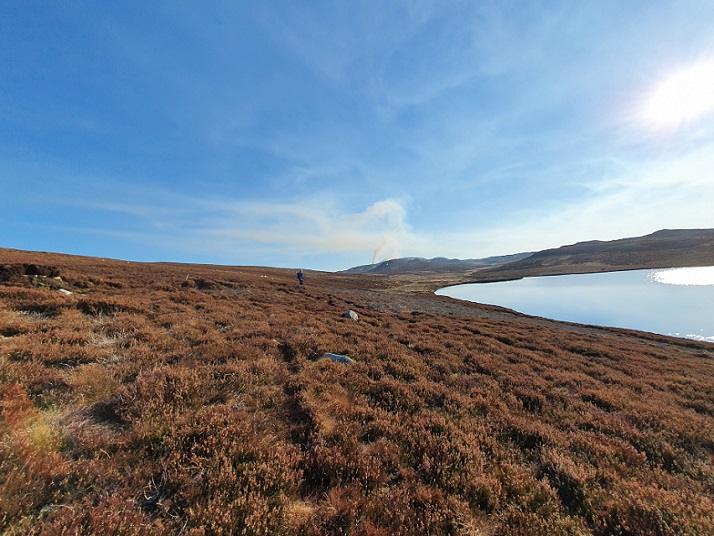
Most, if not all, of the “cloud” has been created by pollution, not the weather.
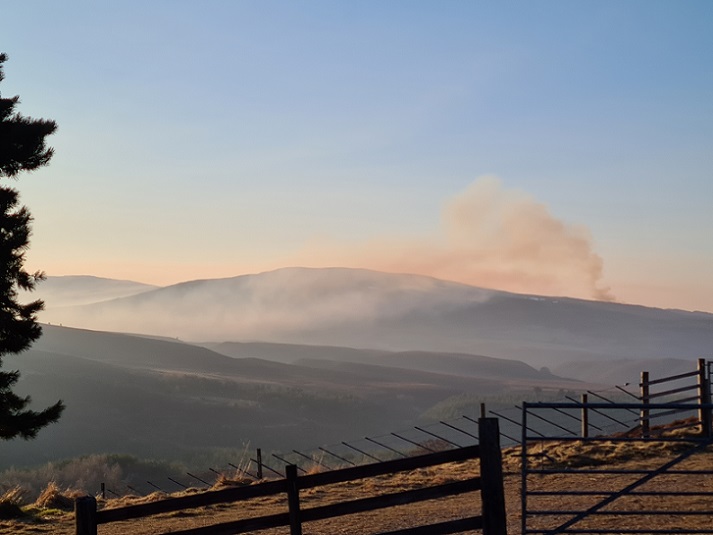
The Cairngorms National Park Authority has some good staff, almost all based around Grantown on Spey, who unfortunately do not have the power to tackle the air pollution, even though this must be directly harming them and other local people. Perhaps its time for the Scottish Environment Protection Agency to act? But the CNPA could, through its conservation byelaw-making powers, prevent the destruction muirburn causes to the natural environment and through that the harm it causes humans.
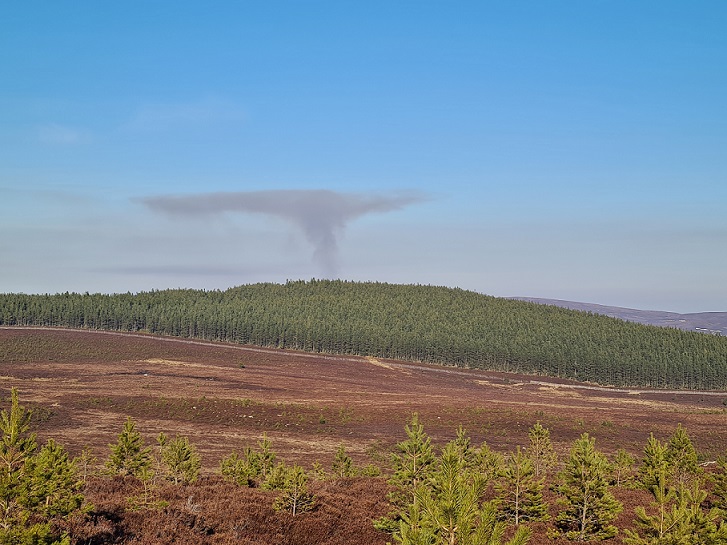
The photo above illustrates just how much of the moorland around Grantown and over to Glenlivet could develop into woodland if the CNPA used byelaws to prevent muirburn in the National Park. If grazing levels were kept low, woodland would naturally generate on dryer areas while the wetter parts of the moor would develop as bog. That would be good for both carbon absorption and wildlife and would give a big boost to the Scottish Government’s conservation objectives.
Unfortunately, there seems little will in the Scottish Government to tackle landowners and sporting interests. The result that not only are they failing to address the climate and nature emergencies, for a few days of the year they are allowing direct harm to human health through air pollution.
Thanks so much for raising this issue, an annual nuisance and catastrophe for our environment. Below is my email to the Environment and Climate Change minister after a dreadful week of muir burn ( week ending 1st March). This week was just as bad. While we were in the Ladder Hills near Carn Liath, there were so many fires that the Deeside mountains were obscured by a brown haze from North to South. There was a temperature inversion so at times we were above the brown haze in clear air while the valleys were full of smog. Do think Prince Charles appreciates the impact of this practice? He must surely be aware that it is happening.
Dear Mr Macpherson,
Ref. Muirburn.
I am very familiar with all the justifications put forward for this practice including fire prevention (a new justification!), grouse health, jobs etc. I am also aware of all the dis- benefits which include peat destruction, carbon release, harm to wildlife and habitat, uglification of our landscapes etc. The main one which concerns me today is the appalling air quality that we, in Moray and much of the NE, have to endure just when we are coming out of winter and want to be outside. We have another six weeks of this before the end of the season.
Over the last week the entire region has been covered with a smoke haze with local concentrations which must exceed allowable pollution levels. It is bad enough to make eyes water and to “catch” in one’s throat. The wind can move plumes of smoke which then sink into the next valley and hang around for hours. On a day this week while walking in the Ladder hills near Tomintoul, there were many plumes some of them towering like thunder clouds. The entire horizon had a brown haze. How can this go on in the light of the Scottish governments ambitious environmental targets? How can one niche activity have such a negative impact on so many of us? I attach the view from my home near Dufftown but this is only one estate’s activity.
Totally agree, afternoon air quality in Moray was disgusting, from Lossiemouth last Sunday huge yellow plumes could be seen all along the Southern aspect.
As well as the undoubted effect on people’s health and wellbeing, the negative economic effects on small communities can’t be discounted.
As an example, a couple of years ago, we were heading to Glasgow, and had planned a meal and a browse around the shops in Grantown on Spey.
Fires were all over the Dava, and by the time we got to Grantown it was enveloped in a filthy smog, so we kept going.
The whole Spey Valley was disgusting, and we eventually stopped at Perth, where a strong wind cleared the air.
We would probably have spent £30-£50 in Grantown which was lost because of the pollution.
We deserve better from our politicians!
If the heather is not burnt regularly the hill side will return to a long woody useless environment for wild life. Scrub land will return in a very few years. Control burns help to protect the peat as the fire flashes past and ground fires are not created. If folk are concerned about air pollution what about all the wood burning stoves we have now across the country.
The fact that wood burning stoves not used properly (the wood must be dry) and without right controls are polluting is not an argument for allowing muirburn to continue.
I suspect your response went full circle. Perhaps you never realised the contradiction within your supposed justification for the status quo. If the unfarmed upland areas were left unburned each season , to permit natural regrowth and decay, then native species, scrub land and upland tree growth might well return within a generation. This could be assisted by strategic replanting of native trees in defined more sheltered glades. Natural hillsides provide a habitat for all native ground nesting birds, and if allowed to exist will later build back a habitat for a whole ecosystem of insects – beetles, wood ants, among mosses and lichens – feeding populations of birds, voles, mice and larger mammals…all would reappear. The untended ground would also be able to hold and absorb larger volumes of rainfall within each catchment, gently releasing this flow through longer periods, thereby reducing flash flooding – a recent, and hugely costly economic penalty now scaring populations within narrow glens. Once flows spread out across floodplains across these hunting regions the cost to field agriculture is incalculable. Be assured, the modern patchwork of muir burn today scarring highland hillsides is not traditional at all. The damage has arisen from haphazard and inept application of existing regulation surrounding land use. Uncontested fresh muir burn has expanded hugely these past 25 years. But now the public have eyes to see it all. It can now bee clearly seen in photos taken on satellites, and airplanes. Crews on The ISS ( the international space station) do observe everything. This destructive change can be seen every day. The dominance and significance of this careless 21st century tartan across our landscapes is a Scottish scandal, much of it caused, by “big money patronage” and nearly all of it -selfishly- within our own lifetimes.
This isn’t true is it Ar? Hen harrier nest in deep ‘rank’ heather – the issue is whether or not it is suitable for red grouse. SNH/NatureScot advise cutting heather an alternative to burning. This advisory note was published in 1996:
I live on the edge of the cawdor estate, they have been burning all week.
Nick this was intended as a reply in response to ‘Ar’ but appear to have drifted its position?.
Interesting the contrast in response by the Cairngorms National Park to muirburn which is treated as a “traditional” land management practice and the response to a few rogue camp fires last summer which were much publicised and criticised. My view is that muirburn is by far the greater evil in its scale, producing large quantities of CO2 and preventing woodland regeneration. Burning large areas of the landscape for a niche hobby is unacceptable in the 21st century.